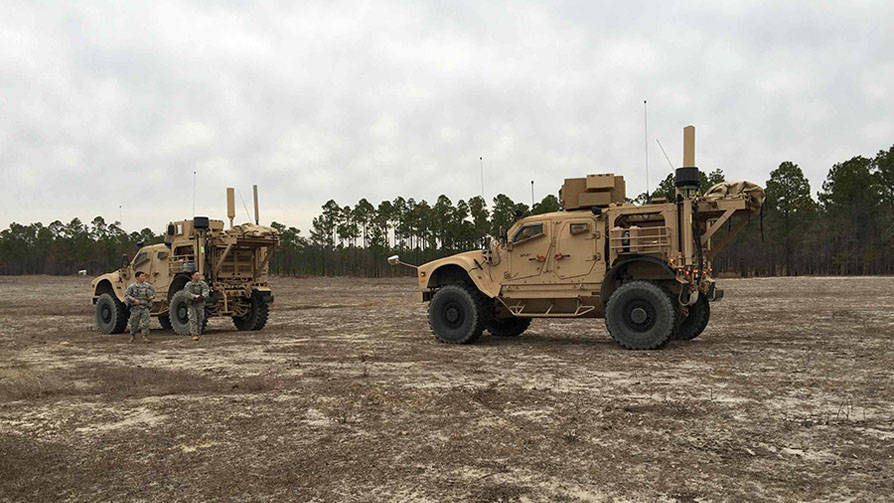SOURCE: IDRW.ORG

The Indian Air Force (IAF) has issued a call for the development of an advanced ground-based Signal Intelligence (SIGINT) system to address the limitations of current systems in hilly terrain, where inadequate Line of Sight (LOS) hampers the ability to triangulate adversary sensors. Announced on April 3, 2025, the proposed system will be mounted on a compact 4×4 all-terrain vehicle, equipped with a smart sensor for tactical Electronic Intelligence (ELINT) and a micro Electronic Support Measures (ESM) system onboard drones. This innovative solution aims to enhance the IAF’s ability to gather critical intelligence in challenging environments, such as the mountainous regions along India’s northern borders, ensuring real-time situational awareness and improved electronic warfare capabilities.
The IAF highlighted the shortcomings of existing ground-based SIGINT systems, stating, “Presently, ground-based Signal Intelligence (SIGINT) systems have restricted capabilities in hilly terrain and are unable to triangulate the adversary’s sensors due to inadequate Line of Sight.” In regions like the Line of Actual Control (LAC) with China or the Line of Control (LoC) with Pakistan, where rugged terrain and high altitudes dominate, traditional SIGINT systems struggle to detect and locate enemy radar, communication systems, and other electronic emissions. The new system is designed to overcome these challenges by combining a mobile, all-terrain platform with drone-based sensors, providing a flexible and robust solution for intelligence gathering in contested environments.
At the heart of the proposed system is a compact 4×4 vehicle designed for all-terrain operations, with an engine capable of steep climbing and off-road navigation. This ensures that the vehicle can operate in the rugged landscapes of the Himalayas, where steep gradients, rocky paths, and extreme weather conditions are common. The vehicle will house a SIGINT system with an erectable antenna, allowing it to capture a wide range of electronic signals, including both Communication Intelligence (COMINT) and ELINT. Compact receivers inside the vehicle will process these signals, enabling the system to detect, identify, and locate enemy communications and radar emissions with high accuracy.
A key feature of the system is its integration with drones, which will be equipped with micro ESM systems to extend the reach of the SIGINT capabilities beyond the vehicle’s LOS. The vehicle will feature modular storage space in the form of trays, designed for the storage, transportation, charging, launching, and recovery of multiple drones. These trays can be extended through a suitable mechanism to launch the drones and retracted after recovery, ensuring efficient operation in the field. The drones will be linked to the vehicle via a data link, allowing them to relay real-time intelligence back to the system for analysis and dissemination.
The use of drones addresses the LOS limitations in hilly terrain by providing an elevated vantage point for signal detection. Flying at altitudes above the terrain, the drones can detect electronic emissions that would otherwise be blocked by mountains or valleys, enabling the system to triangulate the location of adversary sensors with greater accuracy. The micro ESM systems onboard the drones will focus on detecting radar and other non-communication signals, while the vehicle’s COMINT receivers will intercept enemy communications, providing a comprehensive picture of the electronic battlefield.
To ensure seamless communication with higher echelons, the system will be equipped with Satellite Communication (SATCOM) capabilities, allowing it to transfer data in real time to command centers. This is particularly important in remote areas where traditional communication networks may be unreliable or unavailable. The SATCOM link will enable the IAF to integrate the SIGINT system with its broader command-and-control infrastructure, such as the Integrated Air Command and Control System (IACCS), ensuring that intelligence gathered in the field can be acted upon swiftly.
The system’s design emphasizes operational efficiency and resilience. The 4×4 vehicle’s all-terrain capability ensures that it can be deployed rapidly to forward locations, while the modular drone storage system minimizes logistical challenges by providing an all-in-one solution for drone operations. The erectable antenna and compact receivers inside the vehicle are designed to be rugged and reliable, capable of operating in harsh environmental conditions, including extreme temperatures, high altitudes, and dust storms. The system’s ability to charge and store drones in the field further enhances its autonomy, reducing the need for frequent resupply or maintenance.
This initiative reflects the IAF’s broader push to modernize its electronic warfare capabilities in response to evolving threats. China, in particular, has invested heavily in electronic warfare systems along the LAC, deploying advanced radar, communication jammers, and SIGINT platforms to monitor Indian movements and disrupt operations. The IAF’s new SIGINT system aims to counter these threats by providing a mobile, drone-supported platform that can operate in the same challenging terrain, gathering intelligence on Chinese electronic assets and enabling the IAF to plan effective countermeasures.
The development of this system is likely to involve collaboration between the IAF, the Defence Research and Development Organisation (DRDO), and private sector companies with expertise in electronic systems and unmanned technologies. Companies like Bharat Electronics Limited (BEL), which has a strong track record in developing radar and communication systems, and Tata Advanced Systems Limited (TASL), which has experience in drone manufacturing, could play a key role in the project. The DRDO’s Centre for Airborne Systems (CABS) and Electronics and Radar Development Establishment (LRDE) may also contribute, leveraging their expertise in ELINT and ESM technologies.
NOTE : Article cannot be reproduced without written permission of idrw.org in any form even for YouTube Videos to avoid Copy right strikes. Websites doing illegal reproductions will get DMCA and Legal Notices.